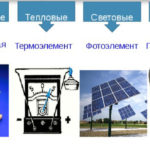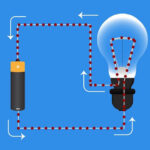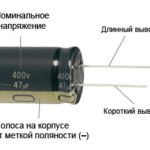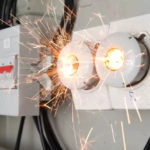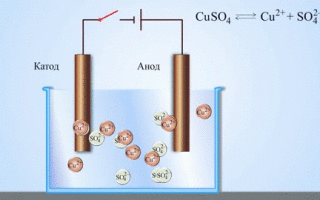Often there is a problem of determining which of the electrodes is the cathode and which is the anode. First you need to understand the terms.
The concept of cathode and anode - a simple explanation
In complex substances, electrons are distributed unevenly between atoms in compounds. As a result of the interaction, particles move from an atom of one substance to an atom of another. The reaction is called redox. The loss of electrons is called oxidation, and the element that donates electrons is called a reducing agent.
The addition of electrons is called reduction, the receiving element in this process is the oxidizing agent. The transfer of electrons from the reducing agent to the oxidizing agent can proceed through an external circuit, and then it can be used as a source of electrical energy.Devices in which the energy of a chemical reaction is converted into electrical energy are called galvanic cells.
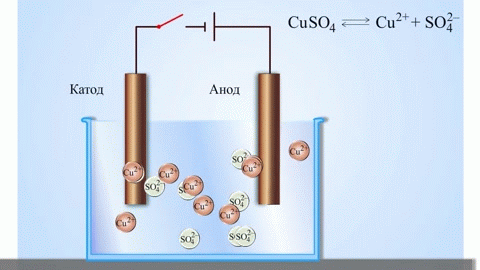
The simplest classical example of a galvanic cell is two plates made of different metals and immersed in an electrolyte solution. In such a system, oxidation occurs on one metal, and reduction occurs on another.
IMPORTANT! The electrode at which oxidation occurs is called the anode. The electrode on which the reduction takes place is the cathode.
From school chemistry textbooks, an example of a copper-zinc galvanic cell is known, which works due to the energy of the reaction between zinc and copper sulfate. In the Jacobi-Daniel device, a copper plate is placed in a copper sulfate solution (copper electrode), a zinc plate is immersed in a zinc sulfate solution (zinc electrode). The zinc electrode gives off cations to the solution, creating an excess positive charge in it, and at the copper electrode the solution is depleted in cations, here the solution is negatively charged.
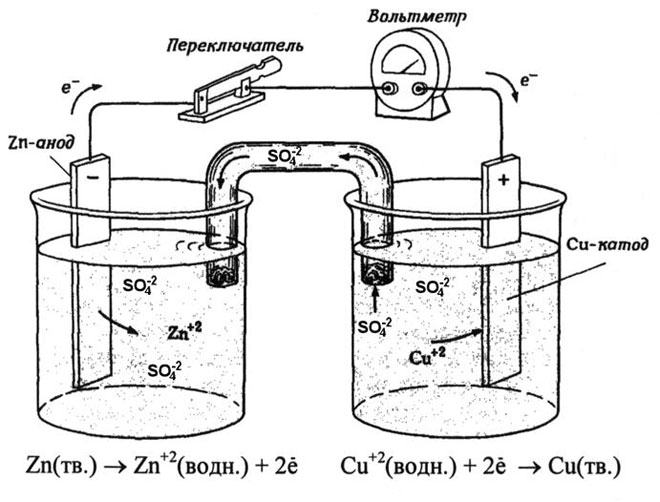
Closing the external circuit causes electrons to flow from the zinc electrode to the copper electrode. The equilibrium relations at the phase boundaries are interrupted. An oxidation-reduction reaction takes place.
The energy of a spontaneous chemical reaction is converted into electrical energy.
If a chemical reaction is provoked by external energy of an electric current, a process called electrolysis takes place. The processes occurring during electrolysis are the reverse of the processes occurring during the operation of a galvanic cell.
ATTENTION! The electrode where the reduction takes place is also called the cathode, but in electrolysis it is negatively charged, while the anode is positively charged.
Application in electrochemistry
Anodes and cathodes take part in many chemical reactions:
- Electrolysis;
- Electroextraction;
- electroplating;
- Electrotype.
Metals are obtained by electrolysis of molten compounds and aqueous solutions, metals are purified from impurities and valuable components are extracted (electrolytic refining). Plates are cast from the metal to be cleaned. They are placed as anodes in the electrolyzer. Under the influence of an electric current, the metal undergoes dissolution. Its cations go into solution and are discharged at the cathode, forming a deposit of pure metal. The impurities contained in the original uncleaned metal plate either remain insoluble as anode sludge or pass into the electrolyte where they are removed. Copper, nickel, lead, gold, silver, tin are subjected to electrolytic refining.

Electroextraction is the process of separating a metal from a solution during electrolysis. In order for the metal to go into solution, it is treated with special reagents. During the process, a high purity metal is precipitated at the cathode. This is how zinc, copper, cadmium are obtained.
To avoid corrosion, to give strength, to decorate the product, the surface of one metal is covered with a layer of another. This process is called electroplating.

Electroplating is the process of obtaining metal copies from bulk objects by metal electrodeposition.

Application in vacuum electronic devices
The principle of operation of the cathode and anode in a vacuum device can be demonstrated by an electron lamp.It looks like a hermetically sealed vessel with metal parts inside. The device is used to rectify, generate and convert electrical signals. According to the number of electrodes, there are:
- diodes;
- triodes;
- tetrodes;
- pentodes, etc.
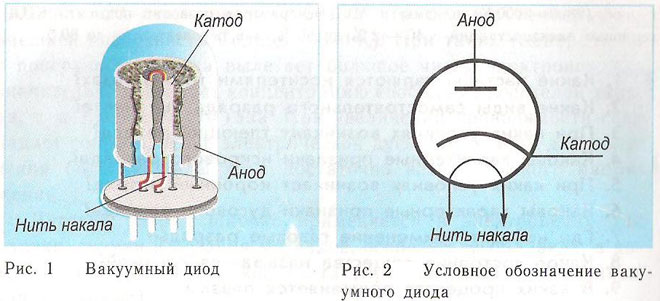
A diode is a vacuum device with two electrodes, a cathode and an anode. The cathode is connected to the negative pole of the power source, the anode - to the positive. The purpose of the cathode is to emit electrons when heated by an electric current to a certain temperature. The emitted electrons create a space charge between the cathode and anode. The fastest electrons rush to the anode, overcoming the negative potential barrier of the space charge. The anode receives these particles. An anode current is created in the external circuit. The electronic flow is controlled by additional electrodes by applying an electric potential to them. Diodes convert alternating current to direct current.
Application in electronics
Today, semiconductor types of diodes are used.
In electronics, the property of diodes to pass current in the forward direction and not to pass in the opposite direction is widely used.
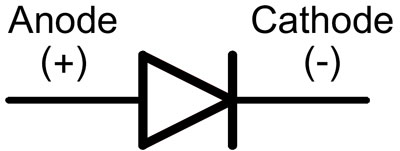
The operation of the LED is based on the property of semiconductor crystals to glow when a current is passed through the p-n junction in the forward direction.
Galvanic direct current sources - batteries
Chemical sources of electric current in which reversible reactions occur are called batteries: they are recharged and used repeatedly.
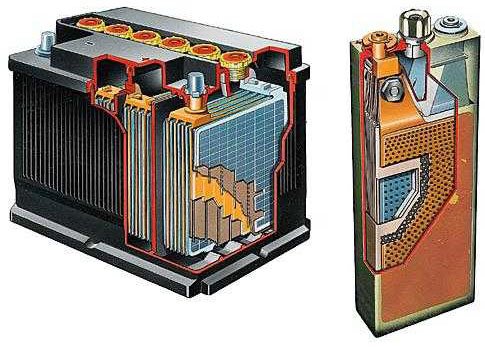
During the operation of a lead battery, a redox reaction occurs.Metallic lead oxidizes, donates its electrons, reducing lead dioxide, which accepts electrons. The lead metal in a battery is the anode and is negatively charged. Lead dioxide is a cathode and is positively charged.
As the battery discharges, the substances of the cathode and anode and their electrolyte, sulfuric acid, are consumed. To charge the battery, it is connected to a current source (plus to plus, minus to minus). The direction of the current is now the reverse of what it was when the battery was discharged. Electrochemical processes on the electrodes are "reversed". Now the lead electrode becomes the cathode, the reduction process takes place on it, and the lead dioxide becomes the anode, with the oxidation procedure taking place. The battery re-creates the substances necessary for its operation.
Why is there confusion?
The problem arises from the fact that a certain charge sign cannot be firmly attached to the anode or cathode. Often the cathode is a positively charged electrode, and the anode is a negative one. Often, but not always. It all depends on the process taking place on the electrode.
ATTENTION! The part that is placed in the electrolyte can be both the anode and the cathode. It all depends on the purpose of the process: you need to put another layer of metal on it or remove it.
How to identify the anode and cathode
In electrochemistry, the anode is the electrode at which oxidation processes take place, the cathode is the electrode where reduction occurs.
In a diode, the taps are called an anode and a cathode. The current will flow through the diode if the anode tap is connected to the "plus", the "cathode" tap - to the "minus".
For a new LED with uncut contacts, the anode and cathode are determined visually by length. The cathode is shorter.

If the contacts are cut off, a battery attached to them will help. Light will appear when the polarities match.
Anode and cathode sign
In electrochemistry, it is more correct to talk not about the signs of the charges of the electrodes, but about the processes going on them. The reduction reaction takes place at the cathode, and the oxidation reaction takes place at the anode.
In electrical engineering, for the flow of current, the cathode is connected to the negative pole of the current source, the anode to the positive.
Similar articles:

